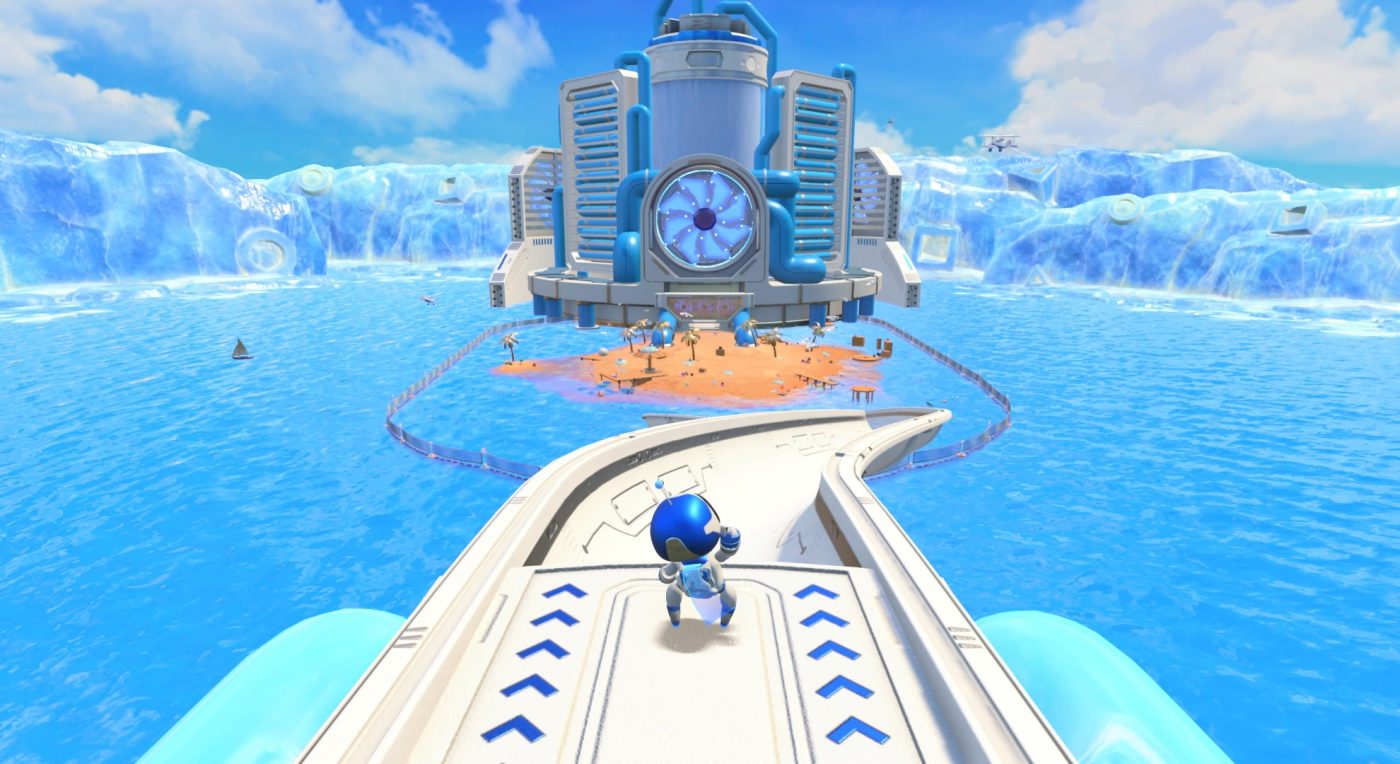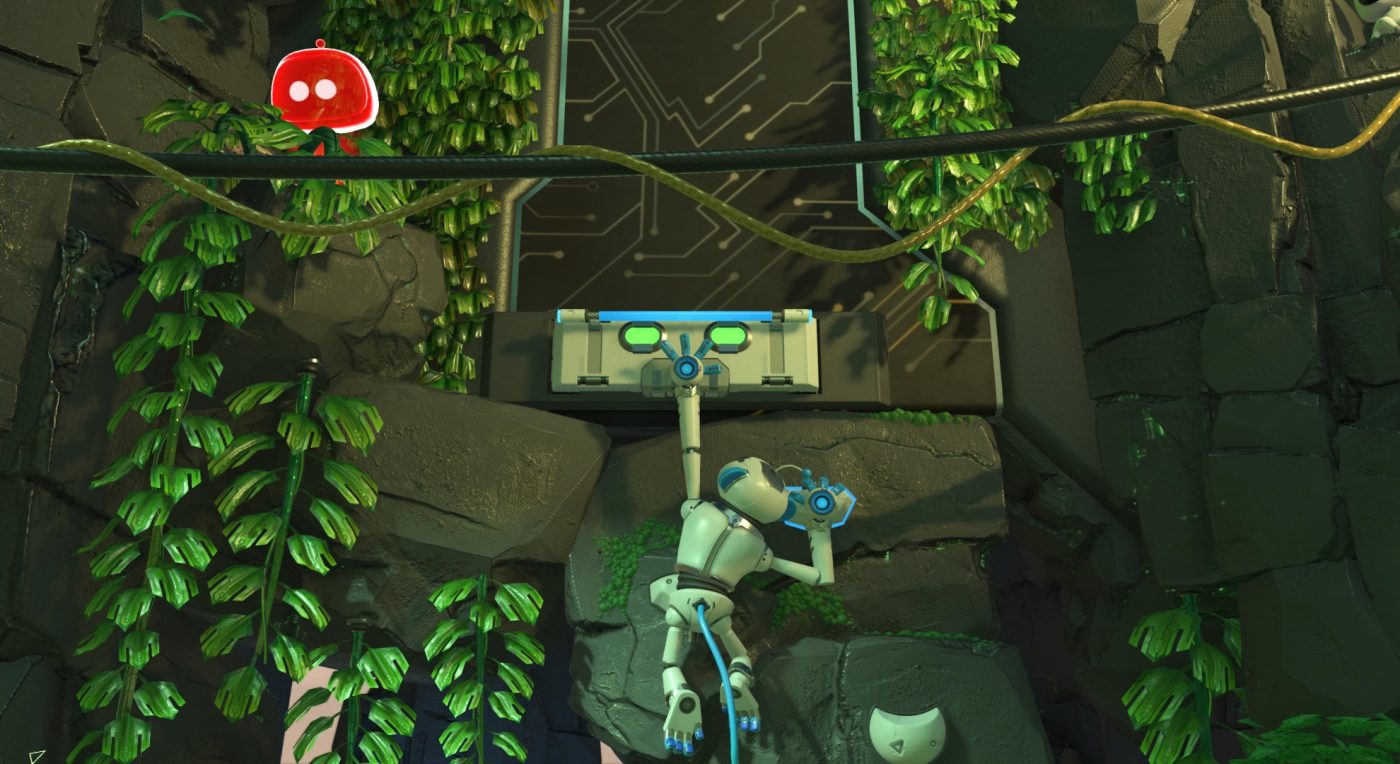Given that it serves as a paean to all things PlayStation and arrives pre-installed on all new PS5 consoles, it’s ironic that Astro’s Playroom finds its most direct antecedent in a 3D platformer that has never appeared on a Sony platform. Not Crash Bandicoot, Spyro the Dragon or even (thank God) Gex the Gecko – I’m referring, of course, to Super Mario Odyssey. Both games see you temporarily possessing different creatures in order to overcome a variety of fun and novel obstacles. Both games include brilliant soundtracks bursting with earworms that will burrow deep into your subconscious long after you have finished hearing them. Both games switch from open environments that invite exploration to tightly-structured, linear 2D stages. Most of all, however, both games are entirely joyous from start to finish.
It’s safe to say that I had a blast with Astro’s Playroom, and I can’t think of a better way to showcase the abilities of my shiny new (and astonishingly large) Playstation 5. To call it a ‘tech demo’, however, is to do it a disservice. While it’s true that it is only three hours long (and that includes getting the platinum trophy), it’s still fulfilling enough to feel like a complete experience and fully-fledged game in its own right. If I’d paid £20 or so for it then I wouldn’t have felt short-changed, so the fact that it comes bundled with the console makes it even sweeter.

That said, if you were to view it as just a tech demo, then you’d at least appreciate that it’s one which does its job very well. The game is structured around a small hub – the ‘CPU Plaza’ – with portals to four other areas, each one representing a different internal component of the PS5, such as its SSD or graphics processing unit (the game itself is set inside the console). While this might sound a bit dry, each of these zones is enlivened by a different theme, so the biome where you explore the console’s cooling fans includes an ice level, while the SSD world blasts you into outer space after getting you to paraglide through a cyberpunk speedway. Each of these areas give the developers ample opportunity to show off the PS5 controller’s capabilities, and Asobi Team absolutely make the most of them. The DualSense’s haptic feedback, in particular, is the most impressive ‘next-gen’ feature I’ve encountered on both the PS5 and Xbox Series so far, and the developers know it. A section where you walk through a downpour is especially uncanny, the controller vibrating gently in discrete spots on your hands to simulate the droplets of rain pattering against an umbrella that handily sprouts from the top of Astrobot’s head. Elsewhere, each world’s unique mech suit transforms you into something that further allows you to experience the controller’s distinctive gimmicks. My favourite was the monkey suit that you zip into in order to traverse a series of sheer cliff faces. Making use of the controller’s adaptive triggers, gyroscope and accelerometer, you either climb hand over hand or violently fling yourself up the side of the mountain.
As you explore each level you’ll also happen across small vignettes where other Astrobots silently play out scenes from PlayStation’s back catalogue of hit games. Lots of these are immediately identifiable: a cloaked Astrobot in a ragged tricorne hat using its Hunter Axe to aggressively slice through grass immediately raised a smile, while a put-upon little fellow stuck in the mud with a tower of crates strapped to his back registered a pang of empathy. Other easter eggs reference more obscure releases from PlayStation’s history, some of which I didn’t recognise even after I’d looked them up, the most esoteric never having made it out of Japan. Their inclusion I found oddly wholesome, nonetheless, a reminder of the zanier side of PlayStation that has perhaps faded following the PS4’s output of often excellent but typically dour narrative-driven single-player campaigns.

Further collectibles include hidden ‘artefacts’ – lovingly-recreated 3D models of PlayStation consoles, controllers and peripherals from its 27-year history. Once discovered, these models are housed in a huge exhibition hall – the ‘Playstation Labo’ – and blown up to fifty times their original size, allowing you to wander around and marvel at car-sized DualShock 4s or monolithic PS2s. While your interactions with each of these models are limited to just one or two animations, jumping on a PSOne Open button the size of a manhole cover in order to send the two bots sitting on the console’s lid catapulting across the room feels wonderful all the same.
As much as this museum is a celebration of PlayStation’s past, Astro’s Playroom, overall, is a game that’s got me excited for the brand’s future, and the future of Astrobot himself, especially. In both this game and his acclaimed debut on PlayStation VR, Asobi Team have proven that they can create polished, creative worlds that are a joy to roam through. Sony’s decision to make a mascot of Astro and to bundle his game with their new console also gives me hope that they plan to publish a feature-length, non-VR Astrobot game at some point in the future. If Asobi are able to demonstrate that they can extend the innovation and confidence they’ve displayed here across a 20 or 30-hour experience, then even the mighty Mario will have need to cling onto his 3D platforming crown. Until then, Astro’s Playroom acts as a delicious (if bitesized) taste of what’s to come from this studio and should definitely be the first port of call for anyone lucky enough to get their hands on a PlayStation 5.

